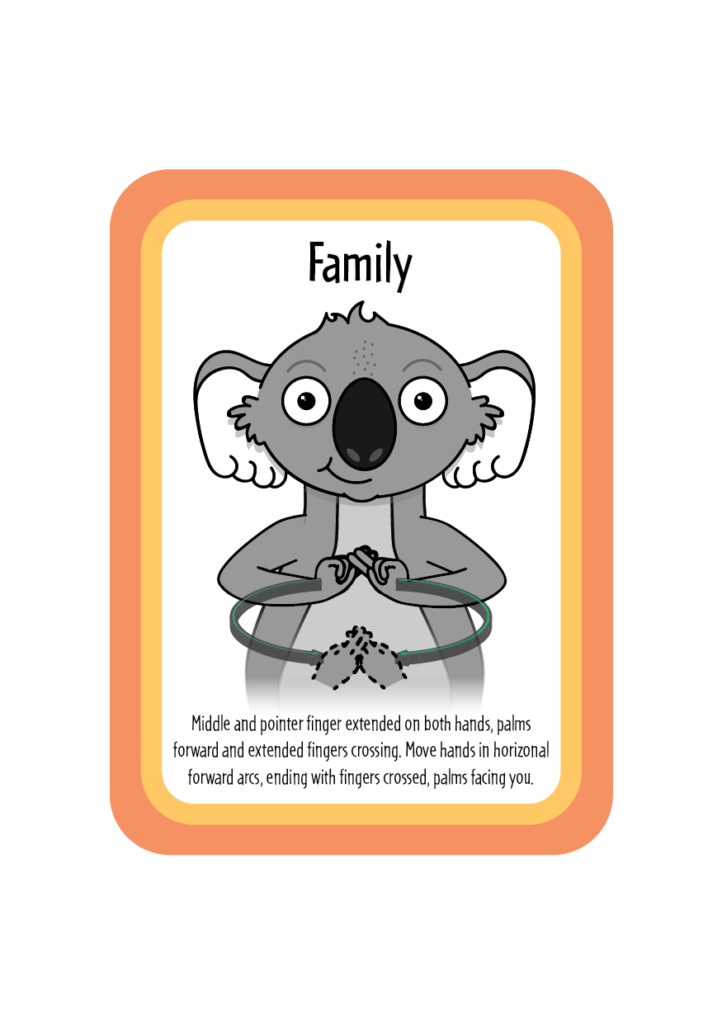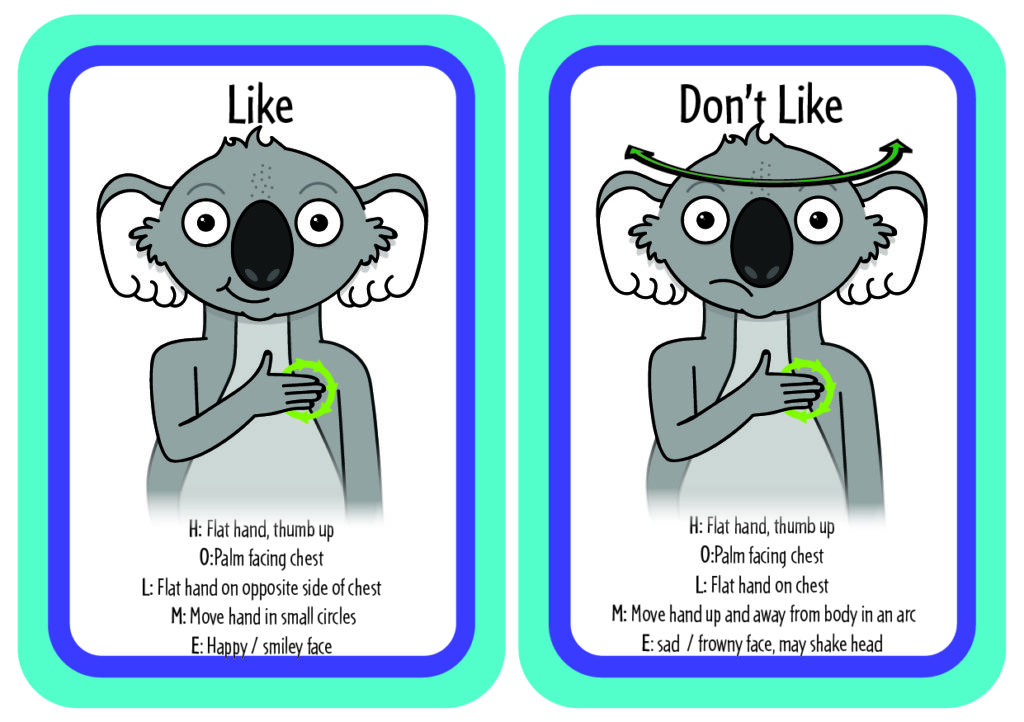HOLME

When viewing video tutorials, flashcards or other Key Word Sign (KWS) resources it can be a little overwhelming, and difficult to work out how to execute the sign correctly.
It can often be easier to break down the sign and focus on each of its components.
An acronym that offers an easy reminder of all the components of a sign is HOLME.
Hand shape
Orientation
Location
Movement
Expression
Hand shape
Handshape refers to how the hand is held during the sign.
Key Word Sign borrows signs from Auslan (Australian Sign Language). There are 38 major hand shapes in Auslan with another 28 hand shape variations.1
One or both hands may be used to execute a sign, therefore take notice whether one or both hands are being used and how they are held at the beginning.
For example which fingers, if any, are extended, is the hand flat, clawed or in a fist, are any fingers touching, if so which ones and are they making a shape such as a circle, are the hands working together etc.

Further, note on the video tutorial or flashcard what the hand shape is at the beginning, as during the movement of the sign the hand may change its shape.
For example during the Key Word Sign please, the hand shape changes from a flat hand to a fist with thumb extended.
Different hand shapes with all other components being the same can alter the meaning of a sign, or make it impossible for the sign to be understood. A pair of signs that has only one component different is called a minimal pair. Below is a minimal pair for Hand shape:

Orientation
This refers to the direction your palm is facing for a particular sign. These directions include, palm facing out, facing in, horizontal, facing left, right, upwards, palm down, palm up.

Take note of the orientation of the hands at the beginning of the sign.
Similarly to ‘hand shape’ the orientation of your hands may change during the movement of the sign. For example in the sign ‘family’ the palms face away from you, but at the end of the movement your palms are facing you.
Different orientation with all other components being the same can alter the meaning of a sign, or make it impossible for the sign to be understood. Below is a minimal pair for orientation:

Location
This refers to the physical place where the sign happens in relation to your body. Signs can happen anywhere on your body, especially when pointing out body parts! However, most Key Word Signs are undertaken on the front of your body, in front of it, or in line with your body.

Take note of the location of your hand(s) at the beginning of the sign.
As with ‘hand shape’ and ‘orientation’ the location of your hand(s) will often have changed during any movement.
For example in dolphin the flat hand bounces along in front of you ending at the other side of your body.
Different locations with all other components being the same can alter the meaning of a sign, or make it impossible for the sign to be understood. Below is a minimal pair for location:

Movement
For many signs to be executed one of both hands need to move. The most common movements are in a circle, up and down, forward, backwards, tapping, back and forth and wiggle.

Make sure you check the movement of each hand, sometimes the non-dominant hand will remain static while the dominant hands executes the movement, or both hands may move simultaneously or alternately.
An example of where the non dominant hand remains static while the dominant hand executes the movements is grass.

Take note on whether a sign has more than one movement.
In the sign above the hand moves across the body AND the fingers wiggle like grass blowing in the wind.
Another example of more than one movement occurring is the sign for shell. This requires the dominant hand to move away from the non-dominant hand AND twist AND bunch fingers at the same time.
Different movements with all other components being the same can alter the meaning of a sign, or make it impossible for the sign to be understood. Below is a minimal pair for movement:

Expression
Not all signs require expression to be used, they are common where the sign conveys an emotion or an emotion is likely to be association with the word. They can also be used to add a dynamic to what we are trying to convey just as we do in everyday conversations.
As well as expressions there may be body movement, or other non manual features to further convey the sign, for example when signing yes and no you may also ‘nod’ for yes or ‘shake head side to side’ for no.

When signing danger, you may look scared, shocked or urgent as you would when warning someone of danger.
Different expressions with all other components being the same can alter the meaning of a sign. Below is a minimal pair for expression:

Hopefully the acronym HOLME will allow you to remember how to execute the signs, but as we say don’t worry too much and try not to overthink it! Our flashcards and video tutorials have all the information you need to help you.
1 www.betterhealth.vic.gov.au/health/conditionsandtreatments/sign-language-auslan [accessed 11 January 2023]

